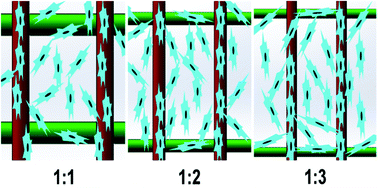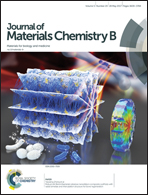Control of cell proliferation in E-jet 3D-printed scaffolds for tissue engineering applications: the influence of the cell alignment angle†
Abstract
The ideal 3D scaffold for biological applications has not yet been designed. Our aim is to better match the scaffold performance through fine control of the fabrication process. Here, we applied electro-hydrodynamic jet (E-jet) 3D printing technology using poly-(lactic-co-glycolic acid) (PLGA) solution to construct scaffolds for tissue engineering applications. We fabricated different scaffolds of 1 : 1, 1 : 2 and 1 : 3 aspect ratios and tested the biological compatibility of the 2D and 3D printed scaffolds with fibroblasts. The scaffolds were used to culture fibroblasts, the main cellular components of loose connective tissue. The results show that the E-jet printed scaffolds could guide and improve cell growth. These scaffolds were able to support cellular alignment and proliferation. The cell angle was consistent with the longitudinal direction of the scaffolds, potentially enhancing the wound healing performance. Thus, the potential of this flexible technology for the 3D printing of scaffolds for the engineering of tissues is extensive.



 Please wait while we load your content...
Please wait while we load your content...